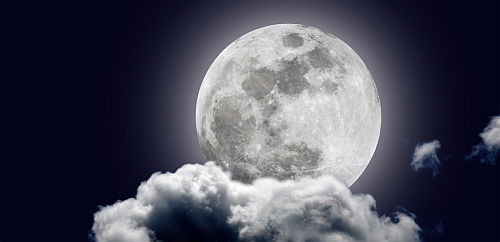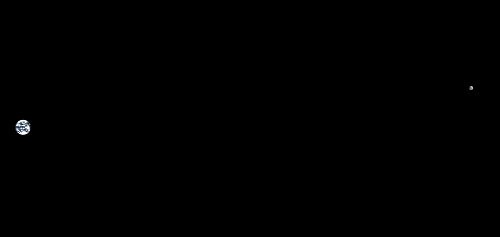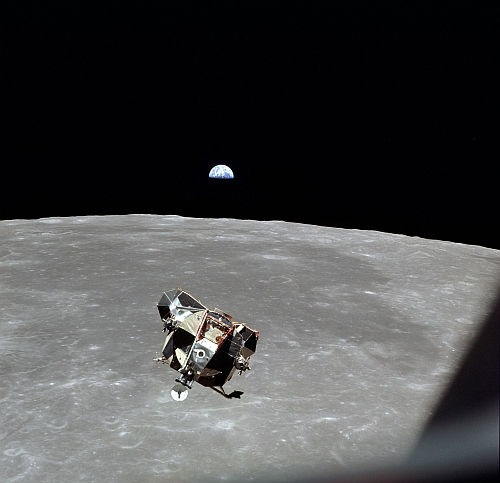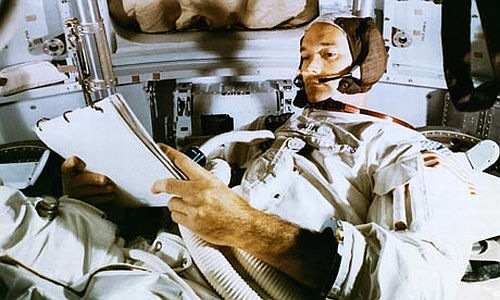Whatever she wants – sexual selection
This post was translated by Igor Santos from the original published by Atila at the Brazilian blog Rainha Vermelha.
==================================================================
Sexual selection is not the freshest of news. Darwin’s grandfather Erasmus had already commented on it. [1]
But a very pertinent question is why it occurs, or at least, what is selected. After all, why does a female finds a male sexy?
Two hypotheses could explain that. Fisher proposed the sexy gene hypothesis. He argues that, whatever the characteristic chosen by females, if it comes from a gene, that gene must become common within a population just because it has been picked up. A female that chooses a male with the sexy gene will have offsprings with that very gene, which in turn will be chosen by other females, spreading it.
The other hypothesis is the good genes one. According to it, when females prefer a certain trace, they are actually opting for a male’s good health, reflected on that given trace. For instance, a male with bright red feathers that uses carotene to increase the redness. Only a very healthy male has enough carotene to “waste” on plumage, so whoever gets the redder male will have healthier offspring and will have been favored by sexual selection.
Both hypotheses seem to be correct. It all depends on the cost involved in the choice. When its not too cost-intensive for the females to choose (e.g. birds that gather for “exhibition parades” with heaps of males, sexy gene might prevail, like in peacock’s tails). In other scenarios, where choice uses resoures, be it looking around for males or exposing their presence to predators for the exhibition, the selected characteristic must have added value, a good gene.
But neither hypothesis explain how a characteristic begins to be selected. Why do females prefer a certain color, a song or any other thing? Where does the preference come from?
Like with most frogs, the song is used to attract partners. But in closer-related species, males don’t do the second part, they only chant the “win” bit. Now a bizarre fact.
When the P. pustulosus melody was played through loudspeakers to females of other close-related species, they like it better than their own species’ call! They prefered the screeching end, albeit they had never heard it before, since their own kind does not do it. Therefore, they already have the nervous circuit that make them like that kind of song better, but only the P. pustulosus males use them.
There is a bias preference amongst the females, who hear and prefer that frequency, but males of the other more than 40 species of the same genus can’t use it. [2]

Platy (left) and Green Swordtail (right). Same genus, but only one has a sword-shaped tail.
Other species follow the same path. In Xiphophorus fish, only the swordfish has its anal fin elongated. The longer the tail, more successful the owner. In close-related species, like platy, on which that long fin inexists, the same bias repeats itself. If artificial tails are attached to the males, thay become more popular. Again, females still prefer something they have never seen before. Probably because they prefer bigger males.
In more and more species, from birds with more intricate melodies to mite with specialized appendages on their pedipalps, we find characteristics in one species that are not present in others of the same genus, but are quite successful among them. It is about those who manage to explore a tendency already present.
The implication is that preference for a trait is inherent to females according to the more utilized senses. It could be the “eyes” on the pattern of a peacock’s tail, since they are vision-oriented birds and need to be in constant lookout for predators. And that crest is sure to attract attention. Senses and nervous circuits that are already in constant use for, say, searching food – like a spider’s sense of touch – are co-utilized or re-routed for sexual function. Which is expected, for our senses resources are limited. [3]
Nothing more fitting for evolution. Females preference is already there and males born with tiny variations. The one with a novelty-colored fin or a more refined song will be chosen and have more descendents rather than their rivals without those characteristics. With time, that gene becomes so ordinary as to level the success rate of all males, until one displays another interesting change, and the cycle starts over.
After all, the ladies like surprises.
Sources:
[1] Smith, C. U. M. “Erasmus Darwin saw sexual selection before his grandson.” Nature 459, no. 7245 (Maio 21, 2009): 321. DOI:10.1038/459321d.
[2] Ryan, M., Fox, J., Wilczynski, W., & Rand, A. (1990). Sexual selection for sensory exploitation in the frog Physalaemus
pustulosus Nature, 343 (6253), 66-67 DOI: 10.1038/343066a0
[3] Ryan, M. (1998). Sexual Selection, Receiver Biases, and the Evolution of Sex Differences Science, 281 (5385), 1999-2003 DOI: 10.1126/science.281.5385.1999
A pixel, from Earth to the Moon, to the infinite and beyond
This is a translated version of this post, written originally in Portuguese by Kentaro Mori at 100nexos and translated by Carlos Hotta.
==============================================

Can you imagine a 1.700 km rock about 400.000 km from Earth? It is really hard for us to picture that. This rock, however, is our Moon. It is really difficult to grasp the Moon’s distance and dimensions, specially because our senses fool us. Try to represent with your hands, or even your arms, the size of the Moon in the sky. If you did that, you probably made a circle that is much larger than the one you see in the sky.
The angular size of the Moon is only half of a degree. If you extend your arm in front of you with your thumb pointing up, its width is about two degrees. That is right: if you extend your thumb towards the the Moon, you can cover it about four times. Even thought the Moon is 1.700 km. Go on and check yourself! ALmost everyone of us will overestimate the size of the Moon in the sky. Some of us will even use their arms when estimating it! This is called the Moon illusion. And this is why the Moon looks so tiny when we take a picture of it: cameras do not lie but our brains do.
We have been observing the sky above us for thousands and thousands of years. We have understood the celestial mechanics for a few centuries. And four decades ago, humans, with no more than six degrees of separation from you and I, have landed in the Moon. There you could not cover the Moon with your thumbs (unless you put then directly in front of your eyes, an occasion when you would see little else).
There are many ways to express how fantastic it was to land in the Moon. As we are talking about distances, please have a look at the image bellow – the inspiration of this post – and join me towards the infinite — and beyond.

This image was created by Drew Olbrich, that wanted to correctly represent the scale between sizes and distances of the Earth and the Moon. We are used to see the pair represented in an artistic way, ignoring their true proportion. This is understandable, as you can see the emptiness between both bodies. This is the truth, however, the space is a great emptiness. In order to see this image in space, you would have to be approximately 560.000 km from where you are now. You may click the image to visit Olbritch’s site and check the image with higher resolution.
“This image has the most impact if you make it fill your whole screen and then turn off all the lights in the room” recommends Olbrich. “Stare at it for a while and try to imagine that you’re out in space looking back through some kind of bizarre porthole.”
Speaking of higher resolution, while I was contemplating Olbrich’s image I started thinking of what would be the size of Apollo space shuttle in the image. It would certainly be so tiny that it would be invisible to us. The next geekiest question would be: what should be the image’s minimum resolution to make the modules appear as a single pixel?

The command and service modules were about 11 meters high. The lunar module that landed in the Moon was about 6 meters high. Let’s be generous (and a bit mathematically lazy) and consider the whole set as 20 meters. If they were the size of a pixel, than the 400.000 km, or 400 million meters that separate the Earth from the Moon would occupy 20 million pixels.
20 million pixels is the equivalent of 10.147 full-HDTVs side by side if your resolution is 1980 pixels in the width. If your horizontal resolution is 1024, then you would need 10.531 HDTVs. If your screen is about 40 cm, it would be almost 4 km of screens.
Amongst all these screens, running for kilometers, a single point, a tiny pixel represents Apollo space shuttle. Everything else would be empty space. A single dust particle could accidentally cover the pixel. A dead pixel would cover it. And the three astronauts inside the shuttle would be even smaller. They would be still smaller than a pixel even if with kilometers of screens.
Now, picture yourself being inside this lone pixel.

“I am alone now, truly alone, and absolutely isolated from any known life.” wrote Michael Collins while he was orbiting the Moon alone. Neil Armstrong and Buzz Aldrin were walking in our satellite for the first time in our epic naked-primate history. Collins loneliness may not seem so great if you imagine that, even though he was far from Earth, his two friends were “just” 105 km away. However, Collins was orbiting the Moon. He was 105 km away from his two friends only when he was directly above then. But he would still be in orbit. For two revolutions, Collins was over the dark side of the Moon, where not only were Amstrong or Aldrin unseen but communication with Earth was also impossible. These were the moments he was “truly alone”.
Collins also confided in his notes that “My secret terror for the last six months has been leaving them on the Moon and returning to Earth alone”. Try to imagine being smaller than that pixel and having to go through 4 kilometers of screens. “Now I am within minutes of finding out the truth of the matter, if they fail to rise from the surface, or crash back into it, I am not going to commit suicide; I am coming home, forthwith, but I will be a marked man for life and I know it.”
Fearful words that show an unknown side of Apollo 11 mission and the “forgotten astronaut”, detailed in an excellent article from Robin McKie at the Guardian. We now know that nothing like that happened. Fortunately, all manned missions to the Moon had three passengers counting with each other.
Which reminds me of something else.
Right now we are more than 6 billion astronauts that, in the words of Buckminster Fuller, make the Spaceship Earth. We are not alone, but all we can count on is each other. And while the Earth would fill a lot of screens, our planet is not really large. And is only one.
It would be impossible to end this post without mentioning that, as well as Apollo could be represented as a pixel lost in the middle of thousands of screens, Earth itself is a small pixel at the edge of the Solar Sysrem. It is a Pale Blue Dot. Collins fears were not a sign of weakness but a sign of sanity. These are the fears we need to have when we are reminded of how “truly alone” we are and how we are “absolutel isolated from any known life” besides our own, with or without considering other intelligent life in the rest of the Galaxy.
The loneliness abyss Collins felt us the same as we feel, in our Pale Blue Dot, since the dawn of mankind in the planet. The only difference is that many of us have not realized it yet.
We must take care of our tiny pixel. And seek other pixels – going to the infinite and beyond. And perhaps finding other lfeforms, “to boldly go where no man has gone before”. Or at least seed other pixels with naked primates. It should not be the fantasy of a few scifi geeks. It should be the natural drive of the whole species.
Collins conquered the abyss and safely returned with his friends, five other missions conquered the 400.000 km, landed on the Moon and came back. We are capable of achievements that are so literal and absurdly great that we cannot even grasp it – if oly we tried.







